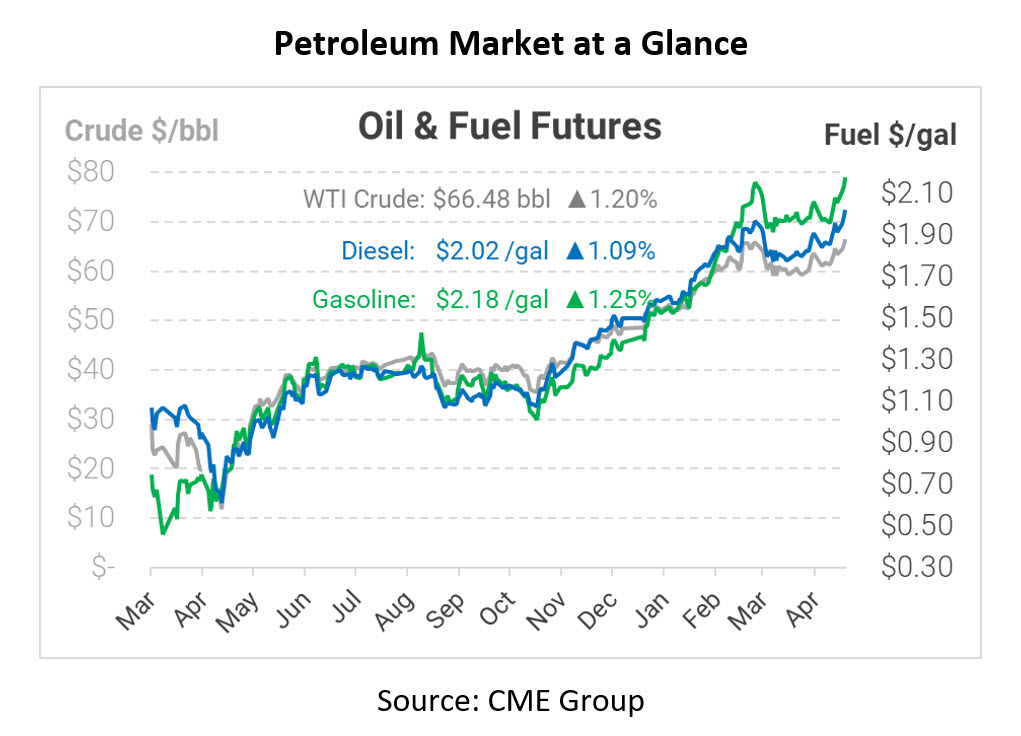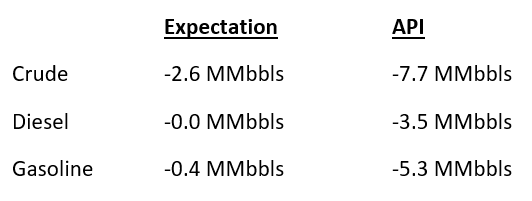
Commodity Supercycle Drives Oil Prices Higher
Oil prices are back to setting multi-year highs as the commodity boom continues. Commodities have been on a tear lately, with astronomical growth for products including lumber, iron ore, grain, urea, and more. Although supplies are still catching up from the COVID-induced lull, massive stimulus efforts in countries like China and the US have kickstarted demand. More and more analysts are pointing to a commodity supercycle, with one timber CEO calling it a “perfect storm.” Pushes for “green” energy and infrastructure also play a part, increasing the need for raw materials.
The IEA has poo-pooed the concept of an oil supercycle, given OPEC’s massive spare production capacity. While it’s true that OPEC could add more production to make up for growing demand, so far it has been slow to do so. The boom in demand for other raw materials will also drive a surge in mining and transportation fuel needs – perhaps pushing fuel demand above pre-pandemic levels sooner than expected. It’s true that spare capacity can offset rising prices, but that only works for so long.
Last night the API reported large across-the-board inventory draws, further supporting a bullish oil outlook. Crude inventories fell 7.7 million barrels, while diesel and gasoline each posted their own large draws. Although markets had expected draws for the three major products, it had not factored in such a large drawdown. Markets will be closely watching todays’ EIA report to see if it confirms the API’s notable numbers.
In biofuel news, a new study from the National Biodiesel Board reports that cities switching to B100 in their fleets would reduce cancer risks by 45% and avert 203,000 asthma attacks annually. Converting public health to economic gains, the study finds that just one Californian area could save $1.69 billion, while other metropolitan areas could see hundreds of millions in public health savings. The report also demonstrates that B100 is 72% less carcinogenic than conventional diesel, and emits 74% less CO2. Of course, switching to high biodiesel levels may come with other potential challenges, including OEM warranty violations, so check with your equipment dealer and your fuel supplier to see what blend of biodiesel works best for your fleet.
This article is part of Daily Market News & Insights
Tagged: Biodiesel, Commodity Supercycle, IEA, Inventories
MARKET CONDITION REPORT - DISCLAIMER
The information contained herein is derived from sources believed to be reliable; however, this information is not guaranteed as to its accuracy or completeness. Furthermore, no responsibility is assumed for use of this material and no express or implied warranties or guarantees are made. This material and any view or comment expressed herein are provided for informational purposes only and should not be construed in any way as an inducement or recommendation to buy or sell products, commodity futures or options contracts.







